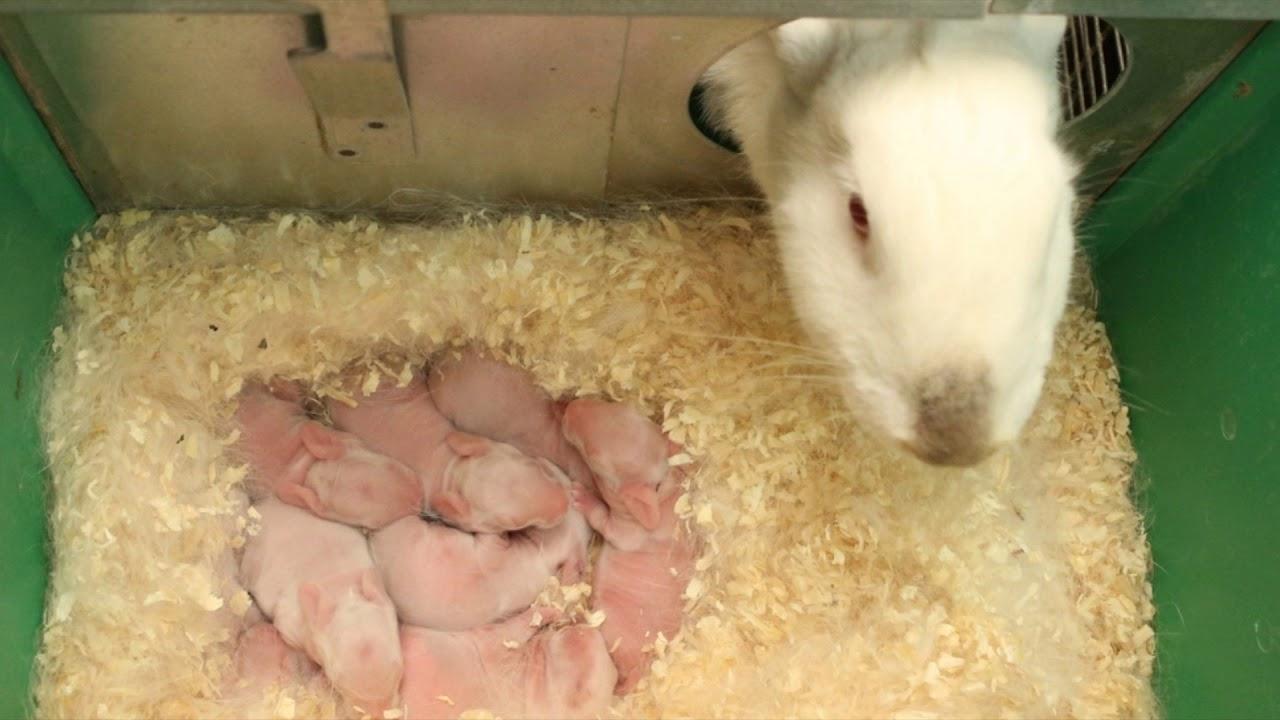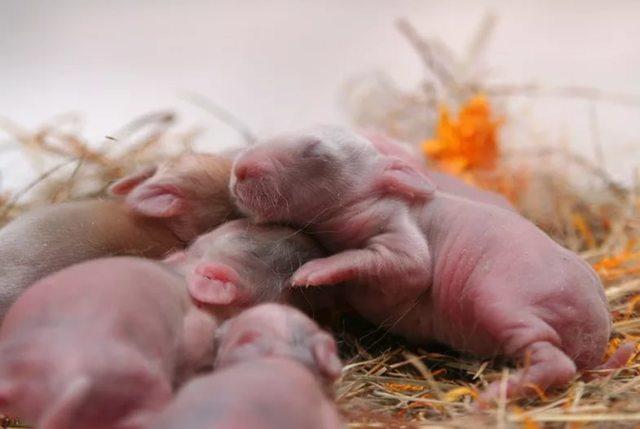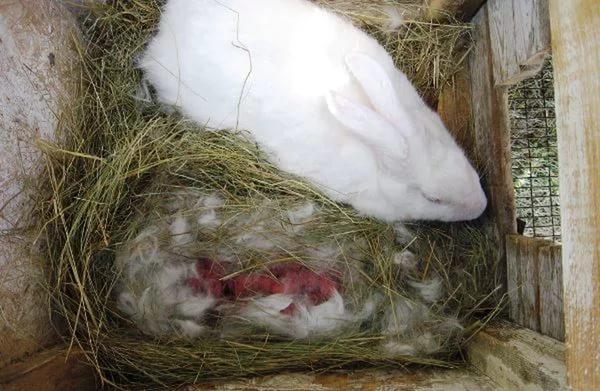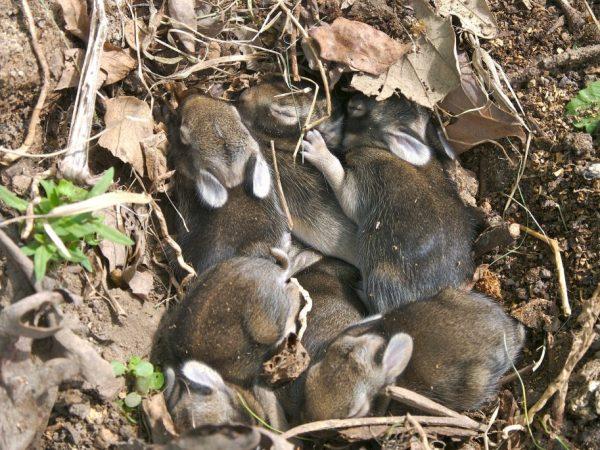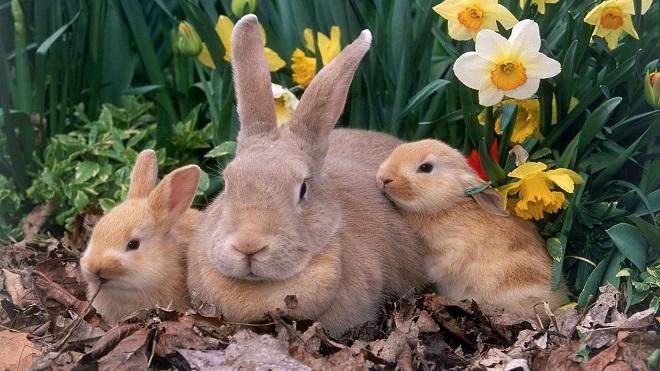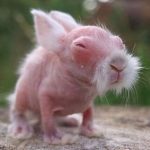Breeding rabbits has certain features that are recommended for all beginners to take into account. Particular attention should be paid to the behavior of domestic animals and take into account the maternal instinct of rabbits after giving birth. Inexperienced breeders often ask the question: why does a female rabbit scatter her babies immediately after giving birth?
Why does a mother rabbit throw her babies out of the nest?
A situation often arises when, immediately after giving birth, the female begins to scatter her cubs.According to experts, this problem can be eliminated only after a clear identification of the provoking factors. Therefore, the breeder must analyze compliance with the rules for caring for pets and, if necessary, show the rabbit to a veterinarian.
Improper feeding
If the rabbit gave birth and scattered her cubs, one may suspect irregularities in the diet. A lack of vitamins and minerals negatively affects the behavior of the female. This is especially true a few days after giving birth. An unbalanced diet makes the rabbit overly fearful and excitable. In this case, she begins to equip the nest, and then destroys it. In this case, the female can also throw away the rabbits.
If the female is thirsty during and after giving birth, she may eat the young rabbits to replenish the lack of fluid.
Stress
The behavior of the female is influenced by a number of external factors. These include repair noise, dog barking, engine operation, and rats entering the room. This provokes an increase in the excitability of the rabbit and can cause the babies to scatter.
The reason that the female does not shelter and throws out the rabbits may be the increased attention of the owners. If babies are handled too often, they will lose their natural scent. As a result, the mother will not be able to identify them.
Sometimes a rabbit experiences stress that is not related to external factors. It may be caused by congenital mental disorders. There is no way to fix this problem. It is not recommended to allow such animals to mate.
Infections and other factors
If a female sheds her young, mastitis can be suspected.This term refers to an inflammatory lesion of the mammary gland, which is accompanied by discomfort. In this case, the female may refuse to feed her cubs.
At the early stage of mastitis, the affected nipples swell and become red. They may become rougher and denser. A sick animal loses its appetite and feels very thirsty. There is also a risk of increased body temperature. The behavior of the rabbit also changes - she may become lethargic or, conversely, overly active.
The provoking factor for mastitis can be infection. Milk stagnation, endocrine abnormalities, and hypothermia also lead to the problem.
Problems are also caused by violations of the conditions of keeping animals:
- absence of the front wall in the queen cell;
- insufficient amount of hay to make a nest;
- too low temperature;
- violation of the structure of the queen cell - feces and impurities enter it through damaged areas;
- intense heat and stuffiness.
What do we have to do?
If the rabbit does not show concern for her offspring, timely measures must be taken. In this case, you can try to awaken the motherly instinct in the rabbit or place the cubs with another female. There is also the option of feeding the rabbits yourself.
Awaken maternal instinct
To do this, it is recommended to do the following:
- temporarily move the rabbit to another cage;
- collect the rabbits using disposable gloves;
- take the female's fluff;
- wrap the baby rabbits with it - this must be done from all sides;
- after half an hour, place the rabbit in the queen cell;
- holding the female on her side, attach the cubs to the nipples.
After removing the female from the cage, it is necessary to carefully inspect the room for the presence of dead cubs - sometimes they remain in the hay. If the female has given birth for the first time, there may be a need to stimulate lactation. To do this, gently massage the nipples until drops of milk appear.
Before attaching the cubs to the mother, you need to gently massage their bellies with a damp cloth. It is recommended to do this in the direction of the excretory organs. Thanks to this, feces will come out. Baby rabbits need to be applied to their mother once a day. The duration of the procedure should be a quarter of an hour.
Place with another rabbit
If it is not possible to awaken the instinct, it is recommended to place young animals with another female. It is recommended to take rabbits of the same age. In order for the female to be able to accept the cubs, she should be moved to another cage for a certain time.
Rabbits should be picked up with clean hands. It is permissible to treat your palms with wormwood. Then it is recommended to clean the cubs thoroughly from fluff and remaining hay and place them in the nest. It is advisable to place them in the center - between the native rabbits.
After 20 minutes, the female can be returned to the nest. During this period of time, other people's cubs manage to acquire the desired smell. As a result, the female will not be able to distinguish them from her own rabbits.
Feed yourself
If there is no suitable female, you can try to feed the cubs yourself. For this, it is permissible to use whole cow's milk. It can also be mixed with condensed milk. This should be done in a 3:1 ratio.
It is recommended to feed baby rabbits 4-6 times a day. This should be done using a pipette. After 20 days they begin to drink from a pacifier, and at 1 month they begin to lap from a saucer.
Scattering of cubs after birth can be caused by a variety of factors. Most often, the causes of problems are inappropriate living conditions or various diseases. To cope with this situation, it is necessary to identify the provoking factor and take measures to eliminate it.

